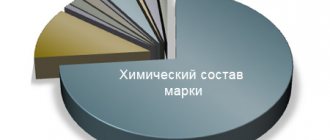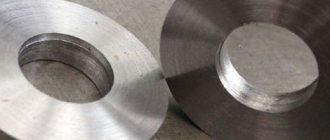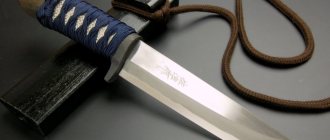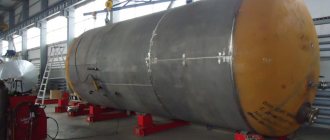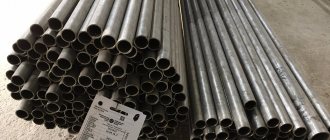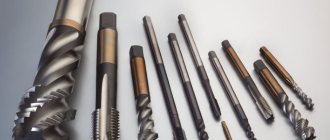Due to the fact that recently there has been a strong increase in interest in energy, and also in the technology that deals with gas turbines, heat-resistant steel is becoming popular. And there are several explanations for this. Thus, not only has interest in the industry increased recently, but also the possibility of using high temperature to manufacture some parts that have been in demand recently.
That is why heat-resistant steel is precisely the necessary discovery that allows us to produce the necessary parts at temperatures that were previously beyond the control of humans. And despite the fact that such a material is immediately exposed to high temperatures and the most unpredictable weather conditions , steel still continues to retain all its properties, which are precisely necessary for the manufacture of sought-after parts.
Which GOSTs regulate
Multifunctional steel 20x23n18 has a complex composition, which is regulated by a number of state standards.
The basis of the alloy is iron, and the remaining elements are necessary to obtain certain performance characteristics. Nickel, chromium, manganese, silicon, phosphorus and sulfur are used as alloying compounds. This composition gives the metal high strength characteristics, resistance to corrosion and increases heat resistance. In addition to the verified ratio of all elements, GOST regulates the technology for manufacturing raw materials and assortments.
Steel is smelted in an arc furnace in several stages, during which special attention is paid to temperature conditions. The generally accepted technological process consists of the following steps:
- at the initial stage of melting, the exposure temperature reaches 1180 degrees Celsius;
- upon reaching the highest melting point, the temperature begins to gradually decrease to a level of 900 degrees;
- after the main stage of deformation, the turn of hardening of the metal begins - for this, the workpiece is heated to 1150 degrees;
- at the last stage the alloy is cooled in water, oil or in open air.
Heat-resistant steel 20x23n18 according to GOST can only be produced on special steelmaking equipment, and only large production enterprises can guarantee compliance with all necessary requirements.
High-alloy heat-resistant steel 20Х23Н18
Substitute
Stainless steel grades – 20Х23Н13, 15Х25Т.
ASTM Standard: 310S AISI.
Application area
High-alloy heat-resistant steel 20Х23Н18 is used in the production of individual parts for combustion chambers, such as clamps, hangers, and fastening parts. This grade of steel is often used to produce seamless pipes, which are operated at high temperatures – up to +1100 °C.
Type of delivery
Stainless steel bars comply with GOST 5949-75, GOST 2590-71, GOST 2591-71, GOST 2879-69. Calibrated rods are made from stainless steel in accordance with GOST 7417-75, GOST 8559-75, GOST 8560-78, and ground rods - in accordance with GOST 14955-77.
Thick sheets produced from steel of this grade must comply with 7350-77, GOST 19903-74, GOST 19904-74, steel strips - GOST 4405-75, GOST 103-76, and strips - GOST 4986-79. When manufacturing forged blanks, there must be compliance with GOST 1133-71.
Chemical composition
| Chemical element | Silicon (Si), no more | Copper (Cu), no more | Manganese (Mn), no more | Nickel (Ni) | Titanium (Ti), no more | Phosphorus (P), no more | Chromium (Cr) | Sulfur (S), no more |
| % | 1.0 | 0.30 | 2.0 | 17.0-20.0 | 0.2 | 0.035 | 22.0-25.0 | 0.02 |
Mechanical properties
| Heat treatment, delivery condition | Rods. Quenching 1100-1150°C, air or water | Sheets are hot-rolled or cold-rolled. Quenching 1030-1130°C, water (transverse samples) | Cold rolled strip. Quenching 1050-1080°C, water or air | Cold rolled strip. Quenching 1050-1080°C, water or air |
| Section, mm | 60 | >4 | <0,2 | 0,2-2,0 |
| 0.2, MPa | 196 | 264 | ||
| B, MPa | 490 | 539 | 580 | 580 |
| 5, % | 35 | 35 | ||
| 4, % | 19 | 38 | ||
| , % | 50 |
Mechanical properties at elevated temperatures
| ttest, °C | B, MPa | KCU, J/m2 | 0.2, MPa | 5, % | , % |
| Rods with a diameter of 38-55 mm. Quenching 1180°C, water. Aging 800°C, 4 hours. | |||||
| 20 | 600-660 | 137-186 | 295-320 | 29-35 | 47-54 |
| 300 | 520-540 | 147-166 | 235 | 25-28 | 45-49 |
| 400 | 540 | 147-166 | 225 | 24-32 | 39-45 |
| 500 | 520-540 | 171 | 210 | 25-31 | 41-45 |
| 600 | 440 | 176 | 195 | 24 | 46 |
| 700 | 315-330 | 171 | 185-195 | 19-24 | 35 |
| 800 | 185-205 | 176 | 165 | 19-27 | 34 |
| Sample with a diameter of 10 mm and a length of 50 mm, rolled | |||||
| Deformation speed 20 mm/min. | |||||
| Strain rate 0.007 1/s. | |||||
| 800 | 255 | 215 | 24 | 67 | |
| 900 | 135 | 135 | 37 | 77 | |
| 1000 | 71 | 64 | 49 | 77 | |
| 1100 | 44 | 39 | 51 | 70 | |
| 1200 | 27 | 22 | 27 | 31 | |
Technological properties
Forging temperature
The initial temperature for forging stainless steel should be +1220 °C, and the final temperature should be about + 900 °C. If the cross-section of stainless steel is less than 350 mm, then cooling is carried out in air.
Weldability
Limited weldability.
Machinability
In the normalized and tempered state at HB 178 and B = 610 MPa, Ku b. Art. = 0.4.
Endurance limit
| Heat treatment, steel condition | Quenching 1100°C, water or air. HB 140-200 | |
| -1, MPa | 255 | 245 |
| B, MPa | 590 | 570 |
| 0.2, MPa | 290 |
Heat resistance
| Wednesday | Air | Air | Air |
| Temperature, °C | 650 | 750 | 800 |
| Test duration, h p> | 4500 | 1500 | |
| Depth, mm/year | 0,0027 | 0,01 | 0,044 |
| Strength group or score | 2 | 3 | 4 |
Physical properties
| Test temperature, °C | Modulus of normal elasticity, E, GPa | Density, kg/cm3 | Thermal conductivity coefficient W/(m °C) | Ud. electrical resistance (p, NΩ m) |
| 20 | 200 | 7900 | 14 | 1000 |
| 100 | 16 | |||
| 200 | ||||
| 300 | 182 | 19 | ||
| 400 | 176 | 7760 | ||
| 500 | 170 | 7720 | 22 | |
| 600 | 160 | 7670 | ||
| 700 | 150 | 7620 | ||
| 800 | 141 | |||
| 900 | 7540 |
| Test temperature, °C | Linear expansion coefficient (10-6 1/°С) | Specific heat capacity (C, J/(kg °C)) |
| 20-100 | 14.9 | 538 |
| 20-200 | 15.7 | |
| 20-300 | 16.6 | |
| 20-400 | 17.3 | |
| 20-500 | 17.5 | |
| 20-600 | 17.9 | |
| 20-700 | 17.9 | |
| 20-800 | ||
| 20-900 | ||
| 20-1000 |
Characteristics and properties
The metal composition is developed on the basis of heat-resistant alloys, but the presence of some additional components enhances the individual properties of the metal. Thus, nickel increases the heat resistance of the alloy, and chromium prevents oxidation. The presence of a small amount of carbon increases the permissible temperature range and increases the plasticity properties. Chromium forms a protective film on the metal surface and finished products are perfectly resistant to high humidity.
Steel has the following specific properties:
- high technology;
- increased plasticity;
- heat resistance;
- resistance to corrosion of any type;
- excellent weldability.
The main area of use of the alloy is the manufacture of various metal parts, and various mechanical and thermal methods are used to process metal blanks to create a specific shape. Steel lends itself well to forging, grinding, polishing and smelting. This property makes it possible to create monolithic parts with high tensile strength.
General characteristics of corrosion-resistant steel
Corrosion-resistant steels include metal alloys that are highly resistant to corrosion processes in different atmospheric and climatic conditions, water, aggressive gas and chemical environments.
Anti-corrosion properties are ensured by enriching carbon steel with special elements, the most important of which is chromium. Its minimum content in the structure of alloys is 10.5%. Currently there are about 250 brands of stainless steel. The most used alloying elements are nickel, cobalt, titanium, molybdenum, niobium. Carbon, which is necessarily included in the composition, gives the finished products the necessary strength and hardness. Changing the proportions of chemical elements produces a metal with different properties, intended for specific areas of use.
Scope of application of stainless steel 20x23n18
The alloy, unique in its characteristics, is intended for the manufacture of parts that will be used under conditions of aggressive and extreme exposure. To obtain equipment parts, ordinary metal blanks are used, but there are also more attractive options, assortments with a ground surface. This assortment is used to create decorative interior elements. For example, furniture in the high-tech style necessarily contains several metal products that give it an original and modern look.
Steel 20x23n18 is purchased for the following purposes:
- creation of parts for heating systems and furnace equipment;
- aviation industry;
- production of parts intended for use in environments with increased radioactive background;
- creating kitchen utensils that are exposed to temperature;
- production of seamless pipes;
- construction of metal structures.
The heat-resistant alloy copes well with intense loads and withstands long periods of heating, which makes the metal indispensable in the manufacture of parts for certain equipment.
Classification of heat-resistant steels
Typically, heat-resistant material is used to make parts that are simply impossible to produce in any other way. First of all, we are talking about blades for engines such as gas turbines. Typically, this material goes through several operations that help produce the necessary parts.
Operations used for the manufacture of gas turbine engine parts:
- Forging.
- Grinding.
- Mechanical restoration.
- Polishing.
- Precision casting.
All these and many other technical tasks must go through the metal called steel. There are many different types of this metal, but steel 20x23n18 its characteristics prove that it is not only the most common, but also adapted to work and perform all necessary technical operations in any climatic conditions.
Stainless steel products 20x23n18
In you will find a wide range of steel 20x23n18 at the price from the manufacturer. Qualified consultants will help you choose an assortment option and calculate the required volume of rolled metal. Depending on your technical requirements, the following products can be purchased from the company:
- metal sheets of different thicknesses with subsequent surface treatment;
- finished pipes in a wide dimensional grid;
- calibrated metal rods;
- steel strips;
- wire of any diameter.
The company complies with all established regulations and carefully monitors the quality of each batch of products.
To select and purchase products made of stainless steel 20x23n18, go to the catalog.
Most popular brands:
GOST 20Х13 (AISI 420, DIN 1.4021)
– stainless steel with a martensitic structure, cannot be welded, is not prone to temper brittleness, and does not form internal defects during the production process. Used for the manufacture of measuring and cutting tools, springs, leaf springs.
GOST 12Х17 (AISI 430, DIN 1.4016)
– ferritic stainless steel heat-resistant grade, does not contain nickel. Characterized by good anti-corrosion resistance in moderately aggressive chemical environments and high temperatures.
GOST 12Х18Н9 (AISI 304, DIN 1.4301)
– a heat-resistant, corrosion-resistant alloy used in welded structures in contact with aggressive environments. It is used for sheet parts, welded equipment, heat exchangers, pressure devices.
GOST 08Х18H10 (AISI 304H, DIN 1.4948)
– an austenitic type of heat-resistant, corrosion-resistant alloy, used for the production of rolled pipes, components and assemblies for the chemical and engineering industries, heat exchangers, and industrial tanks.
GOST 03Х18H11 (AISI 304L, DIN 1.4306)
– chromium-nickel grade is used for the production of equipment, tanks and pipelines for the chemical industry, in the production of nitric acid and other aggressive substances.
GOST 08Х18H10Т (AISI 321, DIN 1.4541)
– a stainless, heat-resistant and heat-resistant alloy, non-magnetic, resistant to oxidation and has good weldability without preheating. It is used as food and technical stainless steel for the production of rolled sheets and pipes, welded equipment, the manufacture of containers, tanks, tanks and equipment in the chemical and oil and gas industries.
GOST 03Х17H14М2, 03Х17H14М3, (AISI 316, 316S, 316L)
– non-hardening austenitic grade, areas of application – welded parts, equipment for the pulp and paper and chemical industries, boiler bodies, tanks and installations for the coal industry.
GOST 08Х17H13М2Т (AISI 316Ti, DIN 1.4571)
– structural heat-resistant heat-resistant stainless alloy is used for fasteners and welded structures in various industries.
GOST 20Х23H18 (AISI 310S, DIN 1.4845)
– heat-resistant and heat-resistant austenitic stainless steel used for the manufacture of forgings, clamps, combustion chambers, fasteners and boiler elements, used pipes, couplings.
When choosing stainless steel, you should take into account the operating conditions of the metal, the expected load, and the necessary additional properties of the product. If you are in doubt about how to choose the right stainless steel, it is better to contact a specialist. Leave a request on the website, and our managers will give recommendations on selecting the optimal grades of stainless alloys for the given operating conditions.
